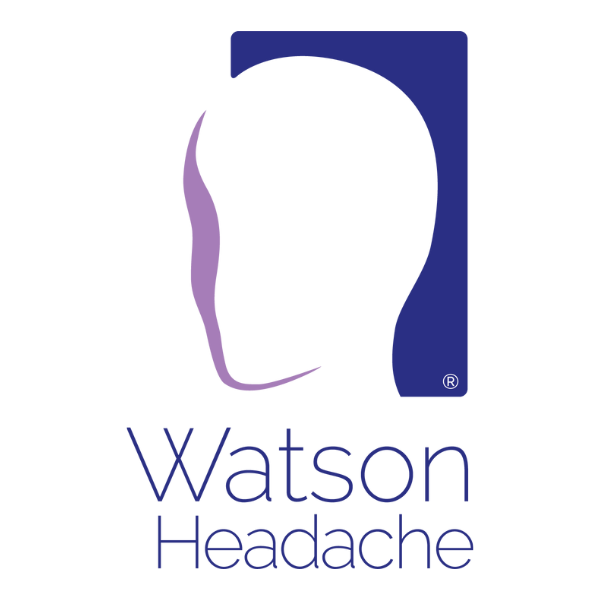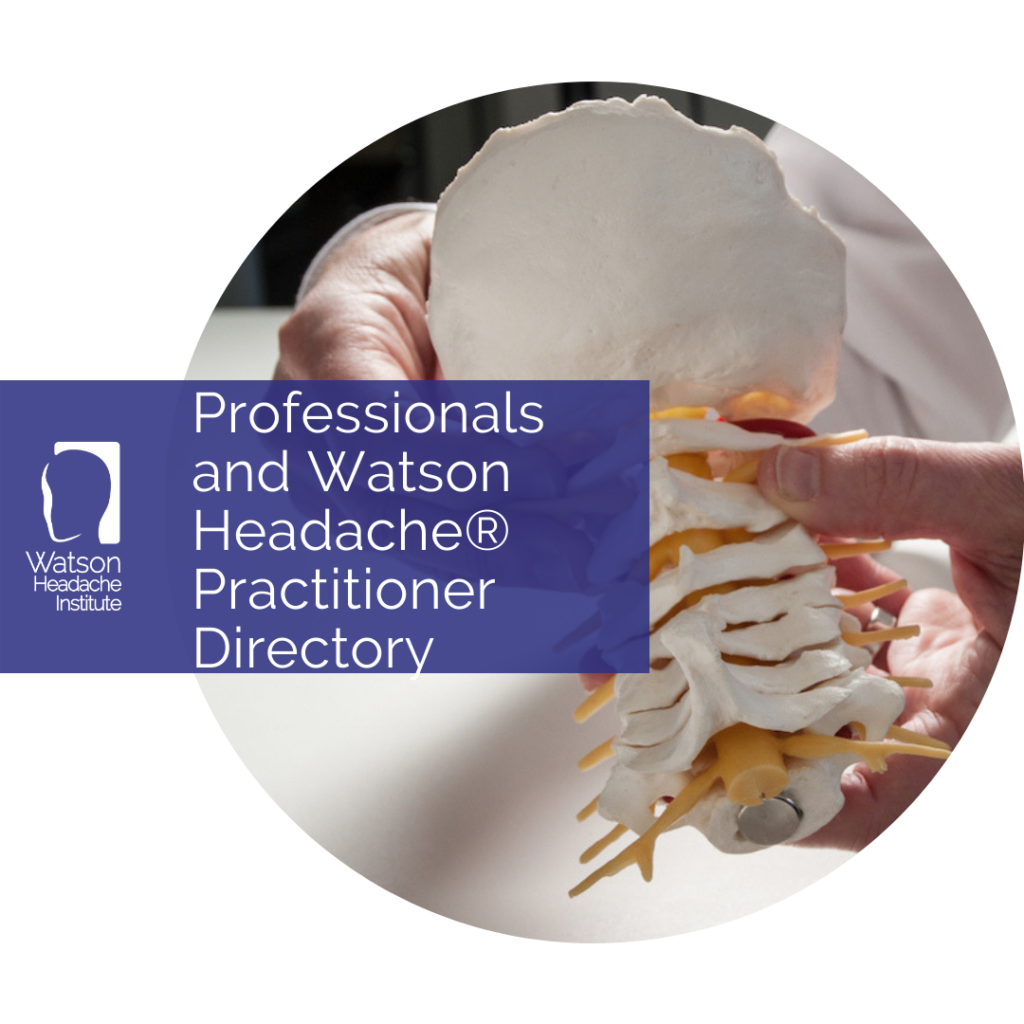Watson Headache® Approach
Identifying the Role of the Neck For Health Professionals Managing Headache and Migraine
a sequence of manual therapy techniques and innovative clinical reasoning, identifying and managing relevant neck disorders not only in cervicogenic headache but also in primary headache
Upper Cervical Spine
The Watson Headache® Approach is the only manual cervical approach to recognise this. Other manual therapy treatments are often Neuro anatomy indicates that the immediate musculoskeletal cause of Headache or Migraine will be noxious afferents (C1-3) from dysfunction of the O-C3 spinal segments and related structures.1
The Watson Headache® Approach is a manual therapy system designed to identify and treat relevant (to Headache and Migraine conditions) disorders in the upper cervical spine.
It is important to emphasise that The Watson Headache® Approach does not involve the use of high velocity thrust techniques.
The Approach involves a series of original passive accessory intervertebral movement examination techniques (unique to the Watson Headache® Approach), which are applied by slow, non-oscillatory (i.e. sustained) thumb pressure, selectively examining each of the upper three spinal segments through their known ranges of movements.
If a disorder (usually hypomobility) of one or more of these segments is responsible for Headache or Migraine, the usual head pain is reproduced – temporarily – it ceases immediately the technique is ceased directed at the spasm, and not the cause.
This explains why previous neck treatments have been ineffective, or, provide temporary relief only.
Often just treating (successfully) the trigger for the muscle spasm provides significant relief.
As previously mentioned, referral of head pain occurs when the involved (stiff) joint is stressed by muscle spasm… but which joint?
Relevancy of C1-3 Afferents
According to the Medical Model of Headache, temporary reproduction of typical head pain when examining upper cervical structures is a key diagnostic criterion of Cervicogenic Headache.2-6 However, whilst one can be very suspicious that temporary reproduction is diagnostic of Cervicogenic Headache, neuro-anatomical-physiological research has shown that reproduction alone is not a fallible criterion.7
Relevancy of C1-3 afferents in Headache or Migraine is only confirmed if, as the examination technique is sustained, the reproduced head pain lessens.
The resolution time varies, and whist there are exceptions, ranges between 30 to 90 seconds.
The ‘Reproduction and Resolution’ of typical head pain in this way, is a distinguishing characteristic of, and fundamental to, the Watson Headache® Approach.
It is widely recognised that the underlying disorder in Headache and Migraine is a sensitised Brainstem.
Recent groundbreaking (peer-reviewed publication) research by Dr Watson PhD,8 has shown that ‘Reproduction and Resolution’ of typical head pain in migraine patients DE sensitises the Brainstem.
The Watson Headache® Approach is the only cervical manual therapy approach scientifically validated to diminish the underlying disorder in Migraine.
In this way, the spinal segment at fault i.e. referring pain to the head can be identified precisely; the Watson Headache® Approach does not involve guesswork. This diagnostic accuracy is unparalleled in manual-cervical-therapy treatments.
Referral of head pain occurs when the relevant hypomobile segment is stressed by muscle spasm. Therefore, manual therapy treatments are often directed at the spasm, and not the trigger of the spasm, this explains why previous cervical treatments have been ineffective, or, provide temporary relief only.
An Abnormal Musculoskeletal Pattern
- A subtle asymmetrical distribution of intra-discal pressure in the C2-3 disc triggering the muscle spasm.
which in turn
- Stresses one or more of hypomobile OC1-C3 spinal segments.
which then
- Refers pain into the head and/or sensitising the Brainstem.
Others have coined this clinical pattern the ‘Watson Headache Chain Reaction’.
The Trigger
Crucially the Watson Headache® Approach focuses on the trigger for muscle spasm (often just treating – successfully – the trigger for the muscle spasm provides significant relief), which simultaneously removes the stress from the referring segment.
The Watson Headache® Approach is unerringly accurate – it is a comprehensive approach based on sound principles and fundamentals that, when fully understood and followed, is very successful.
Successful application of the Watson Headache® Approach relies heavily on skilled, experienced palpation.
The Watson Headache® Approach has evolved from Dr Watson’s 24000 hours of exclusive clinical experience with over 8000 Headache and Migraine patients
References
- 1. Bogduk N. Cervicogenic headache: anatomic basis and pathophysiologic mechanisms. Curr Pain Headache Rep. 2001 Aug;5(4):382-6.
- 2. Watson DH, Drummond PD. Head pain referral during examination of the neck in migraine and tension-type headache. Headache 2102 52; 8:1226 - 1235.
- 3. The International Classification of Headache Disorders, 3rd edition (beta version). Cephalalgia. Jul 2013;33(9):629-808.
- 4. Sjaastad O, Fredricksen TA, Pfaffenrath V. Cervicogenic headache: Diagnostic criteria. 1998;38:442-445.
- 5. Antonaci F, Sjaastad O. Cervicogenic headache: A real headache. Curr Neurol Neurosci Rep. 2010; 11:149-155.
- 6. Fredriksen TA, Antonaci F, Sjaastad O. The Journal of Headache and Pain 2015, 16:6
- 7. Goadsby PJ,Bartsch Anatomy and physiology of pain referral patterns in primary and cervicogenic headache disorders. Headache Currents 2005;10:42-48.
- 8. Watson DH, Drummond PD Cervical Referral of Head Pain in Migraineurs: Effects on the Nociceptive Blink Reflex. Headache 2014;54:1035-1045)



